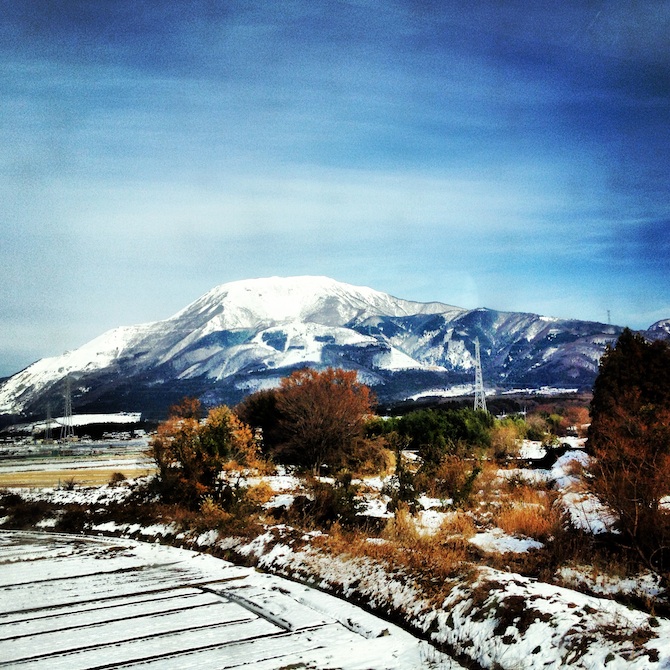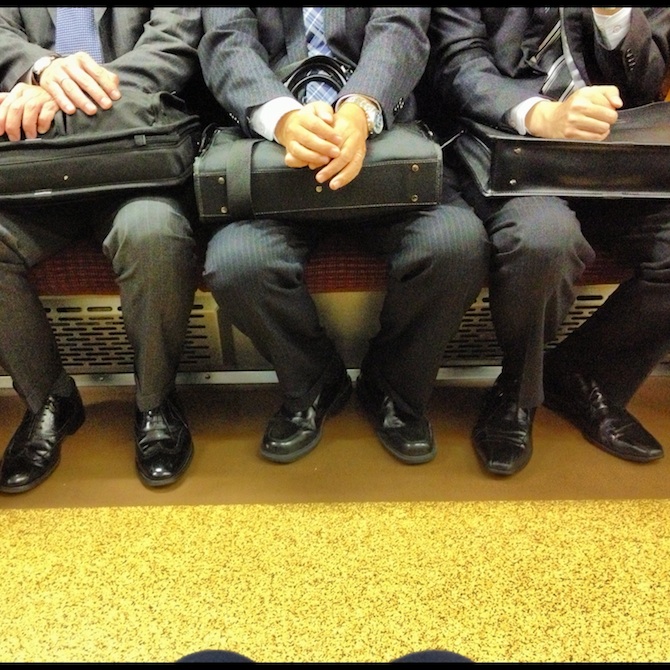
1. Your father’s family is from Okayama, Japan, which has led you to make yearly trips to explore the country. What is it like getting to know Japan from the perspective of having family roots there?
It’s kind of like learning about my life in reverse. Traveling through Japan puts into perspective the food my family eats at home, decorations around the house, individual family member personalities — among a myriad of other things. It’s a real privilege to explore and understand the environment my great grandparents grew up in. Learning about the culture has made me quite proud to be Japanese. Every time I go back, it feels like a homecoming. I can sink right back into the rhythm of Japanese life and travel with ease.
2. What’s one attraction or experience in Japan you recommend that a person probably won’t find in their guidebook?
Most people have their eye on Mt. Fuji when they come to Japan, but I’d also encourage spending a few days hiking in the Japanese Alps and exploring the surrounding areas. From major cities like Tokyo, Kyoto, or Nagoya, it only takes a 2-3 hour train ride to get there. The area is more secluded, offering scenic panoramas, lakes for kayaking, valleys of old houses and villages, onsens (hot springs) with a view, and small towns in and around the perimeter. It’s like taking a step back in time to ancient Japan and the rural environment provides more serenity.
3. For those wanting to experience local Japanese culture, what’s a top experience recommendation?
New Year’s Eve is perhaps the most important holiday in Japan, so spending that time with new friends or a homestay family would provide great insight to the culture. Most tourist attractions are closed over a 3-7 day period so it’s good to find some company with whom you can make mochi, eat soba noodles or osechi (customary new year’s dishes), and visit a shrine or temple at midnight to hear the large temple bells ring. It’s the ideal time for reflection, stories, learning about Japanese traditions, and discussing what you hope to achieve in the coming year. No trip to Japan would be complete without savoring the culinary culture.

Kanazawa
4. While most travelers have heard of Tokyo, what’s one lesser-known destination in Japan you’d recommend to travelers and why?
It depends on what you like to do, but I’d recommend Kanazawa. It’s close to the water on the west coast, good for walking around, and it’s not as overwhelming as Tokyo. The three stand-out things to do include visiting and picnicking in Castle Park/Kenrokuen during cherry blossom season, peruse Omicho Market’s 200+ stalls in the early morning hours for a fresh seafood breakfast, and catch a geisha performance in the Chaya district. Of course, there are tons of restaurants, shops, and resting areas too for those looking to take a break from sightseeing.
5. What’s your recommended food and drink pairing?
One of the best meals I ever had was a cup of ten yakitori skewers (chicken/bird meat), each one a different flavor from the rest. Yakitori shops are a good introduction to Japan’s food culture, as they tend to be cheap, delicious, and easy to come by. Though I don’t drink beer, it seems to go well with most Japanese meals or is at least very popular among salarymen and late night office gatherings. For those who don’t drink alcohol, I suggest tea or my personal favorite, a matcha (green tea) flavored latte.
6. What’s one thing that surprised you about Japan as a destination?
As a society, Japan runs a really tight ship. The first two examples that come to mind when I say this are the designated, outdoor smoking areas and conductors being required to write notes for tardy employees explaining that the trains were delayed. Further evidence being how clean Tokyo is for a city with 35 million residents. From transportation efficiency and workplace behavior to polite food etiquette and reverence in presentation, one misstep can really throw their delicate system off balance. They hold themselves to very high standards, which may be impressive to visitors, but I imagine it’s a very stressful job and image to maintain.
7. For those looking to use the train system in Japan, what’s one tip you would give?
If you’re spending 2-4 weeks in Japan with the intention of visiting many places, buy a Japan Rail Pass online before you go. The shinkansen (bullet trains) and other long-distance trains have different cars for reserved and non-reserved seats. Since non-reserved cars tend to fill up quickly, it would be best to book a seat, especially if you have to travel during rush hour. Otherwise, traveling mid-day without a seat assignment is easier as the trains tend to be less crowded. Also note that riding any kind of train in Japan is quiet time. Talking too loudly on the phone or in person is considered rude and may invite some dirty looks.

Shinkansen
8. What’s one cultural difference between western society and Japan visitors should be aware of before going?
In Japan, there’s something called “keeping the harmony” among a group of people. In the interest of maintaining a positive conversation and cultivating new relationships, it isn’t wise to badmouth or disagree with someone. Because Japanese people are more sensitive to negativity, it can be very easy to offend someone. But, again, they’re not quick to express their hurt feelings so as not make you feel guilty or create a more awkward atmosphere. I think it’s fairly common to swallow pride and tiptoe around strong opinions or bigger issues that might make someone feel uncomfortable. Of course, Japanese people don’t expect visitors to know the nuances of the culture, but this is a piece of advice I wish I had received for my first trip there.
Contributed by Kimi Sugiyama who is a passionately curious world traveler with an insatiable desire to learn about different cultures through food, nature, people, languages, and all the adventures that come intertwined. Photos courtesy of Kimi Sugiyama

Jessica Festa is the editor of the travel sites Jessie on a Journey (http://jessieonajourney.com) and Epicure & Culture (http://epicureandculture.com). Along with blogging at We Blog The World, her byline has appeared in publications like Huffington Post, Gadling, Fodor’s, Travel + Escape, Matador, Viator, The Culture-Ist and many others. After getting her BA/MA in Communication from the State University of New York at Albany, she realized she wasn’t really to stop backpacking and made travel her full time job. Some of her most memorable experiences include studying abroad in Sydney, teaching English in Thailand, doing orphanage work in Ghana, hiking her way through South America and traveling solo through Europe. She has a passion for backpacking, adventure, hiking, wine and getting off the beaten path.








